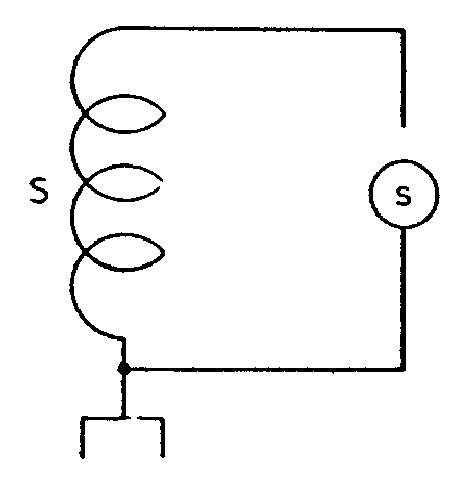
Nikola Tesla Books
turns could have been only about one half of that in the first experiment. If in the latter experiment with the primaries in series the true note of the secondary was struck then, assuming the capacity to be 3600 cm. or thereabouts, the inductance of the secondary as modified by the primary would have been still only 4 x 2,939,000 = 11,765,000 cm. It is, therefore, probable that the capacity which enters as an element of the secondary vibration is much smaller than that which is found by measurement, which is as might be expected, since the cable can not be fully charged and discharged at each alternation, as is evident from the constants.
Observations during the experiments today. When the secondary worked very well the spark was very noisy and nearly an inch thick, judging by the eye, and about 3 feet long. The sparks passed all the time over the lightning arresters as the secondary discharge was playing and, at times, for a short interval they were extremely vivid and thick. This seemed to occur chiefly when the secondary arc became louder and roaring, this indicating a better working of the arc and a higher e.m.f. for a given length of the path through the ground. The sparks on the arresterâs arc, as is now established beyond any doubt, are due to the propagation to the ground through the earth wire, and it is now plain that although they take place when the oscillation is slow, they are more easily produced with a quicker oscillation. Perhaps the higher harmonics enter prominently into their formation. The secondary arc was adjusted to a length of 31", then the sparks on the arresters were very violent. It was thought that, if the vibration was propagated through the earth wire and caused the sparks on the arresters in this way, by adding capacity to the earth wire the action on the arresters would be increased. Accordingly, a sphere of 12" diam. s was connected to the wire as shown in diagram and, indeed, the play on the arresters was intensified. By now reducing the gap still a few inches the display on the arresters seemed to increase further. When the secondary discharge was permitted to pass continuously for about 5 minutes the fuse on the supply circuit primary gave way showing that energy was taken at a rate of about 20 H.P. This also indicated that the connection between the primary and secondary of the oscillator was fairly close and that the secondary was capable of taking up considerable energy. When two external gaps were used in series, with gaps in box, less energy was taken from the supply circuit, this indicating that the arc in primary short-circuited the secondary of W.T. to some extent.
Colorado Springs
July 26, 1899
Investigating vibrations of âadditionalâ or âextra coilâ: from observations before made it would appear, as I believe it has been stated already, that when the impressed electromotive force was increased, in other words, when the movement in the secondary was made greater, the free vibration of the extra coil did not readily assert itself. At least this has been noted in a number of experiments with the object of ascertaining this. A comp
107
July 25
In continuation of work with the secondary, he attempts to match the theoretical calculations with experimental results. As he did in the past, he adjust the capacitance and inductance in the primary circuit so that oscillator operates the best. Under these operating conditions he determines the primary circuit parameters and on the basis of them finds the primary circuit self-resonant frequency. He considers that his oscillator operating frequency, and on the basis of it the secondary capacitance as well (measured on the previous day) determines the secondary inductance. This rough estimate, of which Tesla says it is incorrect, he made, it appears only to convince himself that static coil capacitance is not the element which appears in the oscillator dynamic operation regime. He did some checking, and by reducing the oscillator operating frequency in half (by introducing a primary with two turns instead of one by which method the primary inductance was increased four times), he concluded that the secondary coil capacitance has probably a lower value than the one which he found by previous measurements in another operating regime.
July 26
This entry is concerned with much the same topics as that of June 30th. He investigated the influence of the HF transformer primary-secondary coupling on the 8th of July.
July 26
Tesla considers the same questions as on June 30, and he repeats them in greater detail now. The influence of a link between the primary and secondary of the oscillator high frequency transformer he considered on July 8.


